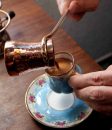
Everyone knows that milk is good for you as it contains lots of nutrients the body needs to stay healthy, like calcium, vitamin D, proteins and potassium. Milk also contains fats, lactose and natural sugars. The problem is that the enzyme needed to break down the lactose in milk is missing in many people. This means they can’t digest it and hence they are labelled lactose intolerant. Other people want to avoid too many fats and sugars in their diet.Fortunately, all types of milk can be frothed. Whether it is low fat, lactose free or any other kind and with a few minor adjustments, everyone can enjoy the tasty froth on top of their coffee based drinks.
Science of Milk Frothing
Before we get to the different types of milk which can be frothed, let us understand that all types of milks produce foam. Why and how they differ in the way froth is created is discussed here. The proteins and fats found in the milk can mean the difference between great froth and one that goes flat. As milk is steamed, air is forced into it as the temperature rises. The air gets trapped in the milk and the proteins in the milk give it stability by “connecting” with the milk. As long as there is protein left in the milk the milk will continue to froth. If there is a lot of fat in the milk (like full fat milk) the protein becomes incapable of supporting the bubbles as the fats weight them down and the froth becomes flat. Milk with less fat is therefore better for frothing purposes. However, when taste is considered, it is the froth of full fat milk that tends to be more flavorful, rich and creamy.
To sum it up, non-fat fresh milk will deliver the biggest possible bubbles and it is very easy to make them. This milk is ideal for beginners as the lack of fat means nothing to weigh the bubbles down, but the flavor will not be very rich. Two per cent milk will also foam fairly easily and offers richer taste compared to non-fat milk, but nothing close to the taste of whole milk. Whole milk is the most difficult to froth and takes practice to get it right but it delivers the best tasting, velvety rich foam.
Sometimes milk simply does not froth, despite the fact that you use the same technique. The foam just disappears within a seconds. This can happen because the fatty acids, known as di-glycerides and mono-glycerides form when bacteria infects milk. As the quantity of these acids increase in the milk, they lead to the bursting of bubbles.
This happens for a number of reasons, among them how the cows are fed, lactation cycle phase the cows were in, even the method of raw milk chilling at the farm. Same thing happens if the milk is not stored under proper condition in the home refrigerator. Last point to remember is that fresh milk froths much better than milk that has been sitting in the fridge for a number of days.
Fresh Milk Alternatives For Frothing:
Soy: Many Baristas soy as a substitute for dairy milk as it creates excellent foam. It can be steamed to almost the same consistency as cow’s milk, thus giving espresso based, specialty drinks texture and feel that is very close to that of cow’s milk. Soy milk’s nutty flavour enhances the flavour profile of the coffee. While soy milk is a popular non-dairy substitute, it frequently comes with added sugars and it is also an allergen. Many people can’t tolerate it or cow’s milk!
Almond: Almond milk is much healthier and tastes great, that is until you add it to your coffee. The combination does not hit it off with some people. It is difficult to froth as it does not foam much and at certain temperatures it curdles.
Hemp: Hemp milk is the new favourite of baristas. While it does not froth as easily as cow’s milk, it does impart a delicious flavour to cappuccinos and lattes. It froths well enough to even be creative and make latte art. It is a bit thicker than soy milk due to greater fat content and can be thought of as creamier variation of soy latte. The higher fat content is the good kind, containing omega 3s and 6s.An 8 ounce serving provides 46% of the daily recommended allowance of calcium, 900 mg of omega 3 and four grams of protein.
UHT milk: This is typically milk from cow that has been treated at high temperatures for sterilization purposes. The heating improves frothing and you get plenty of firm, velvety foam that is longer lasting than pasteurized milk.
Calcium-enhanced milk: this milk contains additional minerals and proteins to increase its calcium content. This results in a milk that not only offers the additional calcium to whose who need it but it also improves the frothing quality of the milk.








